Your secretary is stealing pink paperclips, a supersized piece of finger ended up in your Big Mac, company secrets are being leaked to the Internet… Surviving a scandal isn’t an easy feat. Even the biggest brands are faced with a little dirt from time to time. BLA went on a scandal mission and looked for the antidote. In this edition of BLA you’ll find out everything about MTV and Unilever’s problem, the amount of negativity a brand can stand and more importantly: what makes a brand strong enough to survive any scandal?

The permalancers
Only brands with a strong identity can survive a crisis. You might wonder what a scandal has to do with your brand identity? More than you might think. Let’s illustrate our point with a couple of real-life examples.
Viacom – the mother company of MTV, Nickelodeon, Comedy Central etc. – dramatically cut their budgets a while back, even though the previous year had been a good one. The first ones to fall victim to these cuts were the “permanent freelancers”, better known in the US as ‘permalancers’. Viacom made it difficult for them to get health insurance since they were freelancers, not permanent personnel. Even if they worked just as many hours and did the same amount of overtime, sometimes for over 10 years. Because these people often had highly coveted jobs, they kept on working since they were still young and had what they considered “a dream job”. But a line was crossed, so they went on strike.
A drama according to freelancers
Did this scandal damage the underlying brands? Nope. Viewers didn’t stop watching MTV over this. Not just because they were market leaders, but also because MTV’s identity is so strong it even infused a staff strike. MTV is known for their endless creativity, guts and bravado. The Viacom ‘permalancers’ were part of the brand’s identity. This became immediately clear since this was one of the most creative and crafty strikes you’ve ever seen. No boring slogans or demands, but puns and funny slogans and innovative songs of protest. If you’re going to go on strike, do it in a fun way. That’s so MTV.



You ruined Christmas Sickelodeon WTF?
They didn’t just show off their inventive slogans but also their vocal chops. “I want my benefits” was sung to The Dire Straits’ “Money for nothing”. The younger generations brought the satire with “You’ve got to fight, for your right, to healthcare!” by The Beastie Boys. Meanwhile, many celebrities were offering their support, including social Wunderkind Moby.

We declare shenanigans Viacon Lie-acom
If a brand that’s known for top entertainment is faced with a problem, then the problem should be put out there in an entertaining way. In this case, the victims turned it all into a good show themselves. The consistent attachment to the brand identity is very important if you want to retain the market leader position, even in this situation.
War of the words
He said, she said. Their word against ours. The match of the year 2007 was Unilever’s Axe versus Dove. Unilever received an onslaught of negative reactions and had to discover that maintaining their brand strategy wasn’t as easy as 10 years ago. The consumer had learned to see through the product brands and pointed their arrows at Unilever, the corporate brand. What happened?
Before the Internet, it was easier for companies to cover up problems until they even forgot where they had hidden them. Communication was a lot slower and often only reached a niche target group. Most consumers didn’t read company statements or stock announcements and received less information about their favourite brands. But hiding flaws has become very difficult since then because a large, worldwide online community has taken up the role of watchdog. The Internet is often used as a tool to launch rumours, gossip and scandals. On a corporate level, as well as in showbiz or politics.
Employees work and live on the Internet. A lost e-mail soon turns into leaked company information and shows up on blogs and websites around the world. But that wasn’t Unilever’s problem. Their issue was at product level.
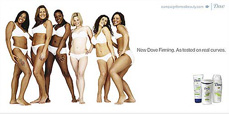




Dove onslaught Dove transformation
Everyone has seen them, the full-figured Dove ladies emphasizing the importance of inner beauty. Or the viral video of a model being digitally altered for her billboard and a sequel ad warning mothers about the media’s impact on their daughters. Dove was ‘showered’ with success. Everything was going swimmingly, the brand had constructed a strong image that was perfectly aligned with their identity.
Until someone realised that Dove ‘lives’ under the same roof as Axe. Good looks, sex appeal and women/men as sex objects are the foundations of Axe’s communication plan. Everything Dove is focused on, is completely ignored by Axe. Which isn’t necessarily a bad thing, but with the super fast flow of communication stream, these messages were reaching everyone willing to listen all at once. It didn’t take long for protest to break out.
Brand hypocrisy and social responsibility
These kinds of conflicts between brands living under a product strategy umbrella will sooner damage the mother brand than the product brands. Unilever was stamped with a label of hypocrisy, which easily trickled down to the underlying brands. They found it increasingly difficult to convince the consumers their intentions were good. This is why social responsibility is of increasingly vital importance to big brands. This concept of accountability has become a standard marketing tool for every Triple-A brand.
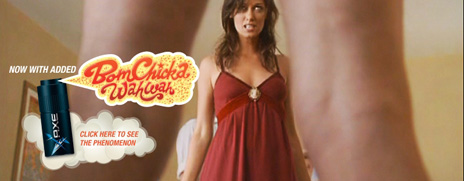
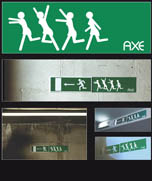
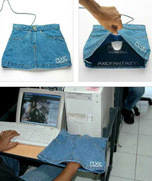
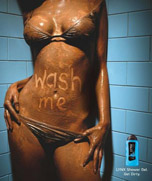
El Hema?
What’s the situation over here? Some time ago, an art project by cultural institution Mediamatic grabbed headlines for their project/design competition for contemporary Arab/Dutch art, design and culture. They turned classic the Dutch store chain Hema into ‘El Hema’, an Arab version. At El Hema you could buy chocolate letters in the form of the Arab alphabet, halal smoked sausage, T-shirts etc. If someone came up with a good idea, it was sent to them and with a bit of luck it would end up in the store. Sadawear had done this before, with Arab clothing, but El Hema was situated in a non-commercial art project.
Initially, the real Hema was not pleased with this project, but came around when they were asked to be judges in the design competition. Mediamatic did have to promise though that the expo wouldn’t be used as a commercial space. All products were for sale, but there were no profits to be made, according to the organisation.


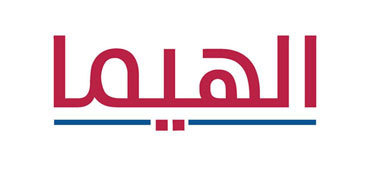
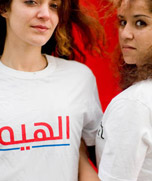
So…?
The best defence comes from within, from the brand itself. Your brand identity is one of the most important aspects of your survival potential. Without a consistent identity you’re nothing, how can you convey a clear message when you don’t even know who you are?

What would you do?
Here’s a little exercise. Imagine the following situation:
Deodorant brand Axe launches a new toothpaste. The product gets a recognisably ‘Axe’ communication campaign and the target groups respond positively. But during the production process, an employee accidentally loses a tube of silver polish. A scandal breaks. Silver polish in my toothpaste?! All the brace-faced teens may think it’s brilliant but how would you solve this problem?




